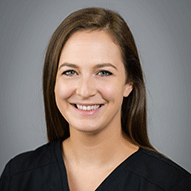Dallas
214-456-2240
Fax: 214-456-8881
Plano
469-497-2501
Fax: 469-497-2507
Request an Appointment with codes: Plastics and Craniofacial Surgery
214-456-2240
Fax: 214-456-8881
469-497-2501
Fax: 469-497-2507
Request an Appointment with codes: Plastics and Craniofacial Surgery
Positional or deformational plagiocephaly (play-GEE-oh-sef-alee) is the most common cause of an abnormal head shape. This is most often caused by the position of the baby’s head both in the womb, as well as shortly after birth. These babies are most often born with a flat area on one side of the back of their head.
All newborn babies have poor control of their head. If they have a flat area on the back of their skull, they will come to rest on the flatter area when they are laid on their back to sleep. Lying on the flatter side can cause it to continue to become flatter, because the skull will grow away from the flat spot that is supporting the weight of the head. This worsening of the head shape is expected to continue for the first four months of life, until these babies are able to lift and control their heads better. A molding helmet may be used to help correct the head shape if the head shape is:
A helmet works by harnessing the rapid growth of the skull. It guides the skull growth in the direction of the abnormal flatness for a rounder shape.
Download and learn a parent's guide about the importance of tummy time and how it's beneficial for your child.








